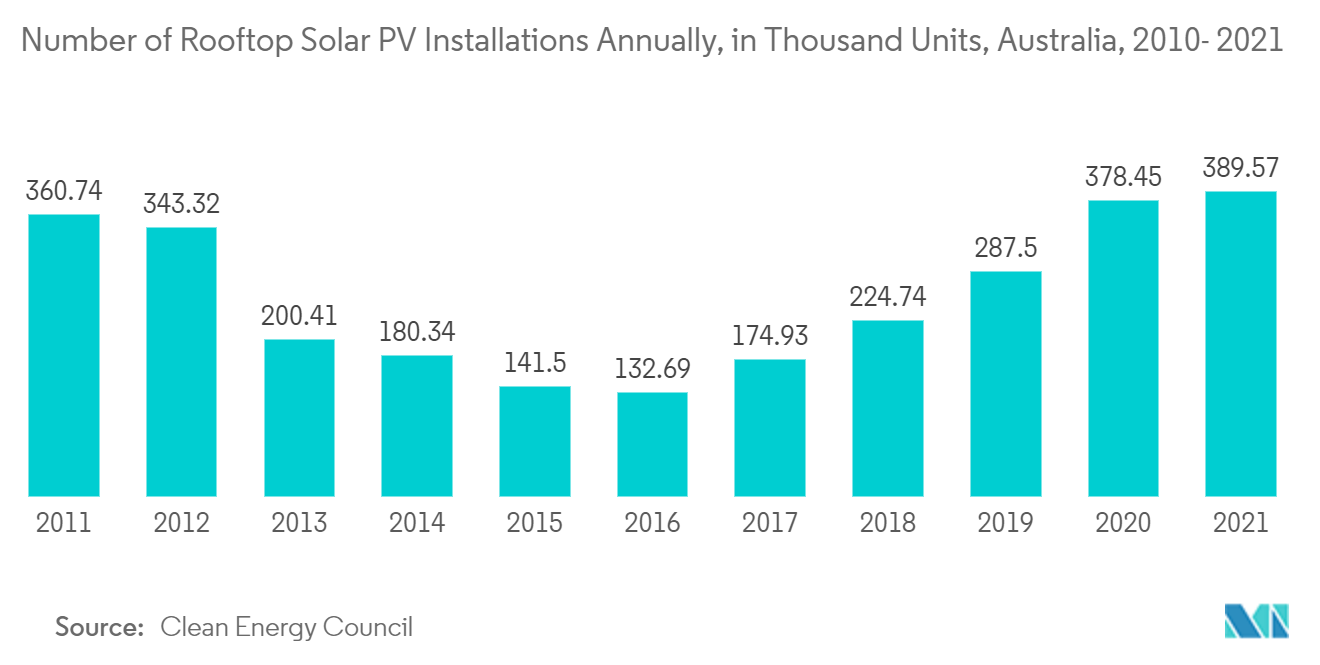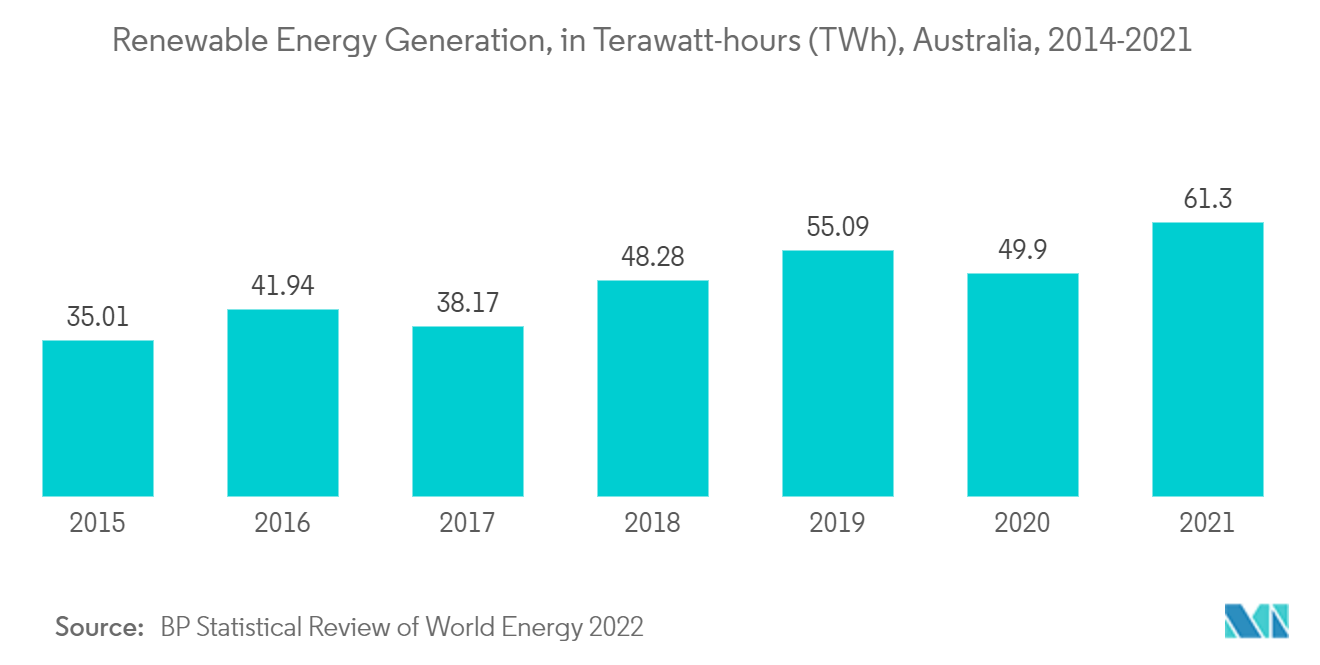Market Trends of Australia Energy Storage Systems (ESS) Industry
This section covers the major market trends shaping the Australia Energy Storage Systems Market according to our research experts:
Battery Energy Storage Systems (BESS) Expected to Witness Significant Growth
Battery energy storage is considered a critical technology in transitioning to a sustainable energy system. The battery energy storage systems regulate voltage and frequency, reduce peak demand charges, integrate renewable sources, and provide a backup power supply. Batteries are crucial in energy storage systems and are responsible for around 60% of the system's total cost.
In 2021, the country witnessed significant growth in rooftop solar PV installations. The number of solar PV installations increased from 378.45 thousand units in 2020 to 389.57 thousand units in 2021, a growth of more than 2.5%.
Due to declining prices, lithium-ion batteries have been witnessing a massive demand in the Australian BESS market. Lithium-ion batteries are expected to hold the most significant share in the battery energy storage market, as they require less maintenance, are lightweight, have a reliable cycle life, and have high energy density in terms of volume and high charge/discharge efficiency.
According to the Clean Energy Council, in 2021, 34,731 energy storage batteries with a combined capacity of 347 MWh were installed in Australia, witnessing a growth of 45.7% compared to 2020.
According to Clean Energy Council, there were 30 large-scale batteries under construction by the end of 2021, representing more than 921 MW of new storage capacity. The battery energy storage systems use utility grids to supply electricity to consumers, reducing energy bills. The battery energy storage systems used in utilities are a cost-effective alternative to conventional infrastructure, especially in helping substations and transmission and distribution (T&D) lines meet the growing demand. These factors are contributing to the growth of the BESS market in Australia.
For instance, in February 2021, CEP Energy announced the largest proposed grid-scale battery project in Australia, with a rated output of up to 1,200 MW. The construction of the grid was anticipated to begin in early 2022 and is expected to be in operation by 2023. Thus, upcoming projects in Australia are expected to boost the demand for battery energy storage systems (BESS) during the forecast period.
Therefore, based on the above factors, battery energy storage systems (BESS) are expected to witness significant demand in the country during the forecast period.

Growing Renewable Energy Sector Expected to Drive the Market
Renewable power is an intermittent energy source. Therefore, electricity storage is essential to maintain the constant power distribution of generated renewable power. Thus, compared to conventional electricity generation sources, renewable power has a higher need for energy storage.
The cost of renewable power generation in Australia is continuously declining, mainly for solar power. The primary reasons behind the declining costs of renewable power generation are innovations in the manufacturing and installation of PV power generation, improved wind turbine materials and designs, and economies of scale. Due to lower costs, renewable energy is becoming competitive and cheaper than conventional power plants.
As of 2021, renewable energy sources accounted for 10.3% of Australian energy consumption. In 2021, Australia's renewable electricity generation was about 61.3 TWh, 22.84% higher than the entire renewable electricity generation in 2020. In 2021, 22.9% of Australia's total electricity generation was from renewable energy sources, including solar (9%), wind (9%), and hydro (6%).
The renewables share in Australia's National Electricity Market (NEM) power generation mix is expected to double to 41% by 2030. With the growing share of renewables, the demand for energy storage applications is also expected to grow during the forecast period.
The country's government and the major private players are focusing on developing large-utility-scale renewable power projects. The large-scale solar sector's momentum witnessed 1.2 GW capacity installations in 2021, increasing the total large-scale solar capacity to more than 5.1 GW. The large-scale solar industry is expected to perform strongly in the next couple of years, with 42 large-scale solar farms under construction at the end of 2021.
Therefore, growth in the renewable energy sector with government assistance is expected to drive the energy storage systems market's growth during the forecast period.


